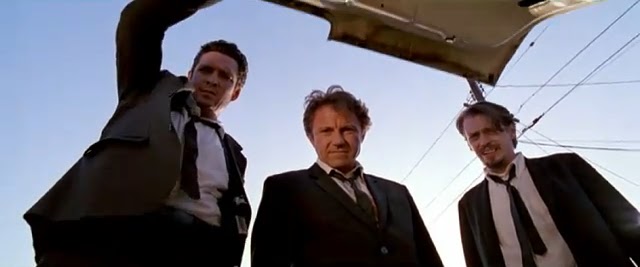Camera movement can be used a variety of ways, creating different viewer interpretations of scenes. An intriguing example is the staging and shooting of the rotating hallway in Christopher Nolan's "Inception." to create this scene, Nolan took inspiration from Fred Astaire's "Royal Wedding," which made use of a rotating room. To create the rotating hallway, Nolan had the hallway set suspended in a cylindrical framework. one of the camera movements used in this scene is a dolly shot; the camera was mounted to a dolly on a hidden track, creating the fixed point of view as the camera could move along the track and then track the actors movement. This creates the illusion that the hallway is rolling throughout space as the actors fight. A link has been included to show the making of this scene. This scene was created using a variety of camera movements and techniques, but the dolly shot allows for the initial understanding of the scene and how a combination of camera movements are used.
Behind the scenes of the Hallway Scene
 |
| Reservoir Dogs, 1992 |
In the 1959 film, 400 Blows, Francois Truffaut uses a
variety of techniques to create a unique style. It is filmed in a deep focus,
allowing all of the scene to be viewed. This places it upon the viewer to make
the decision on where to focus their attention. Another important note about
Truffaut's approach is that there is a use of long shots in order to capture a
scene and the movements of subjects within the shot. This is prominent in the
street scenes in which the main character, Antoine and his classmate are
walking down the street, discussing what their next plan of action will be.
These decisions strengthened the viewers ability to make sense of the Antoine's
struggle in and outside of his family life.
 |
| 400 Blows, 1959 |
When looking at this film, the director’s
relies mainly on imagery rather than on dialogue. Because of this, there is an
important stressor put on facial expressions. With that understanding, close
ups also become prominent. For example, when Antoine’s parents are fighting Truffaut
uses a close up of Antoine’s face to direct the viewer to how the main
character is effected by the fighting rather than just on the argument itself. This
is another example of how Truffaut directs the film in a way that isn’t focused
on solely moving the plot along, but rather in strengthening the understanding
of the characters in it.
Truffaut used symbolism as a way of conveying Antoine's emotions
without having them explicitly stated. For example, in a scene at home, Antione
is seen combing his hair. In this shot there are three mirrors capturing his
image. This is symbolic of how Antoine isn't sure of who he is yet or of his
place in the world. His unsureness is thus seen in his actions that are
troublesome, like stealing. With All this combined, Truffaut creates a complex
view of his characters and setting in 400 Blows.



